Genre: Action Developer: Amuze Publisher: Sega Ent. Players: 1 Released: 2001
Cobbling together mechanics from more famous titles, Headhunter is a lenient stealth game that mostly lets players shoot their way to the end when sneaking past enemies gets boring. In terms of gameplay, it’s simple to control your character with the Dreamcast’s analog stick. The camera sits just behind the player, making it easy to spot obstacles or see where you’re going. You can also center the camera by pushing the x button when angles get wonky. For further visibility, the designers included a HUD in the corner of the screen that shows how each guard patrols, which is similar to Metal Gear Solid. Reading their trajectory and analyzing their behavior is the difference between having to fight swarms of hostiles or being allowed to lurk quietly.
Unlike the Metal Gear games, hordes of enemies will never feel insurmountable. Even if they are challenging, players should be able to force their way through danger and fire bullets into most of their problems. Fighting legions of criminals is one of the most satisfying parts of the game. This is a testament to Headhunter’s fun combat, which feels like it draws its inspiration from ‘90s action films rather than real life. Players can hug walls to shield themselves from incoming bullets and swing around the corner to return fire with a button push. In this regard, Headhunter plays like a more polished Winback from N64 or Namco’s Time Crisis without a light gun. Action sequences comprise the bulk of the game, but the designers do a good job of mixing things up to prevent shootouts from feeling monotonous. Motorcycle segments breakup missions, and though simple, driving is fun. Puzzles require thought and force players to backtrack through enemy-infested paths to find keys or hit switches, reminiscent of Capcom’s early horror games. There are even mandatory virtual reality missions. Directly inspired by Metal Gear Solid, these VR missions can be more cerebral than the actual game and force players to think of clever ways to slink to their goal. These missions are thoughtful and may actually be the best part of the game even if they don’t really move the story. All the VR environments look the same too, though I don’t really mind it.
Headhunter’s plot, which starts slowly and later involves some sort of conspiracy, isn’t anything special. It mostly exists to contrive reasons to hurt things. Jack Wade is a headhunter who doesn’t remember who he is. Not unlike bounty hunters, headhunters hunt down enemies for rewards in a dystopian smog-free Los Angeles. Wealthy people seek organ donors, which they find in criminals. Headhunters use special guns that don’t damage organs as they do their work, which is harvesting organs to benefit the rich while apprehending dangerous people. Multiple bits of copy floating on the Internet say John Kroknes, the game’s creative director, drew his inspiration from Paul Verhoeven films. Though I can’t find the exact interview where Kroknes divulges this bit of information, Headhunter does have a dark RoboCop sort of vibe. The premise is interesting even if the story is not particularly memorable. It’s somewhat entertaining and holds the game together.
Headhunter features cheesy FMV cut scenes to move the story. I’m not a fan of this decision. The in-game engine looks better in my opinion and would’ve helped give the game a consistent look. Headhunter’s aesthetics are fairly bland as well, but at least do a good job of not looking like Metal Gear Solid. Jack Wade wears black pants and a black t-shirt. Sunglasses adorn his face, and his beard is his most distinguishable feature. Enemies do look menacing, but their designs don’t really separate them from other games. Los Angeles is sunny and modern, but otherwise looks like it could be placeholder city for a Grand Theft Auto game. The underworld does look gritty and dark, which adds a bit of tension while playing. Despite my opinions on the art direction, the graphics themselves look great. They’re not as detailed or as vibrant as the Dreamcast’s best, such as Shenmue, but they’re immersive enough to build a convincing world.
Though the visual do a good job of separating itself from Headhunter’s main inspiration, the same can’t be said about the sound design. Wade possesses a hoarse growl that sounds like David Hayter’s early work as Solid Snake. Also, the main theme, a swelling militaristic techno song, feels like Harry Gregson-Williams’ work on Metal Gear Solid 2: Sons of Liberty. The acting is done well, though the story is never dramatic enough to force the actors to convey deep emotions.
Sega published Headhunter for Dreamcast in 2001 in Europe. Acclaim later re-released it on PS2. Maybe it’s because the Dreamcast sorely needed a title like this, but I loved this game in 2001. It was never going to be Metal Gear, but it is a worthy action game and, being the sole representative of the stealth genre, an essential addition for any Dreamcast library. Also, due to Headhunter’s frequent gunfights, I feel like there might be a few people who might enjoy this game more than Metal Gear’s deliberate pace.
SCORE: 8 out of 10

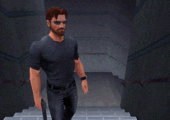
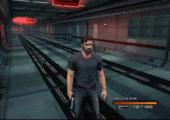
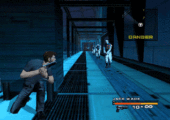

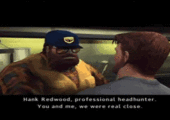
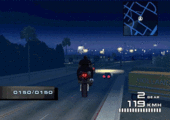
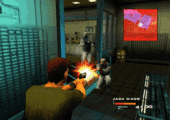
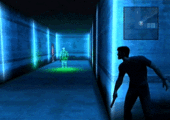
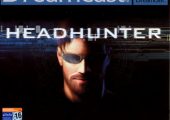
Highly underrated game with an amazing soundtrack. Loved this one!